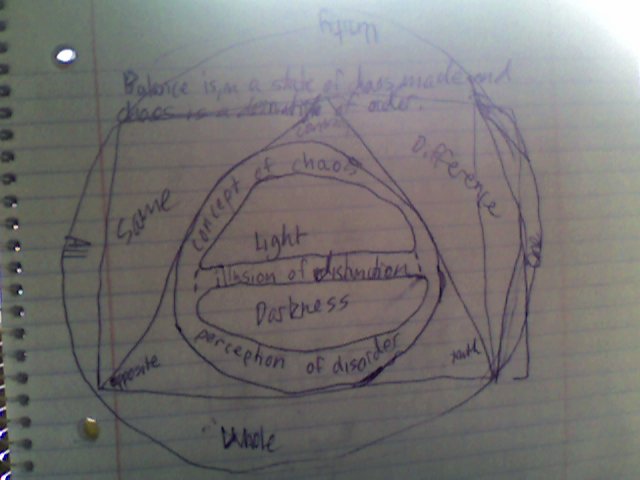Response to Mark's inquiry
Formula:
Obvious type pattern of a given archetype distinct from any of the others? If not, follow this:
Ex.
My results:
extraverted Sensing (Se) (33.3)
introverted Sensing (Si) (26.1)
extraverted Intuiting (Ne) (28.2)
introverted Intuiting (Ni) (43.6)
extraverted Thinking (Te) (36.5)
introverted Thinking (Ti) (31.5)
extraverted Feeling (Fe) (16.2)
introverted Feeling (Fi) (25)
Now I'd look at it like this:
Dom. = inverse of Infer.
Highest score = Ni, correspond with inverse of dom.? No, Te is secondary.
Combined scores of T > N? Too close to discern a prevalent type pattern based upon that.
Highest collective vs lowest collective?
N vs S
or
T vs F
N= 71.8 vs S= 59.4
T= 68 vs. F = 41.2
Proportions? 59.4/71.8 *100 vs 68/41.2 * 100
~%83
~%61
100- 83 = 17% N/S preference
100- 61 = 39% T/F preference
So while the highest collective would be N(slightly), because the T score is so close to the dominant function (in this case Te), when looking at patterns, it is most likely we have a T-dom as opposed to an N-dom, because the last two functions are (usually) very undeveloped,
even comparing Fx vs Sx in general, Sx is much higher.
Therefore, I ask, does the Te-Ni-Se-Fi pattern fit best?
Based upon this proportions, I conclude that entj is the best fit type pattern, despite Ni being the dom. function.
I assumed it was a given that you'd compare the highest score of each dichotomy (N/S or S/N) vs (T/F or F/T) to compare the numbers to determine the proportion of disparity.
Formula:
Obvious type pattern of a given archetype distinct from any of the others? If not, follow this:
Ex.
My results:
extraverted Sensing (Se) (33.3)
introverted Sensing (Si) (26.1)
extraverted Intuiting (Ne) (28.2)
introverted Intuiting (Ni) (43.6)
extraverted Thinking (Te) (36.5)
introverted Thinking (Ti) (31.5)
extraverted Feeling (Fe) (16.2)
introverted Feeling (Fi) (25)
Now I'd look at it like this:
Dom. = inverse of Infer.
Highest score = Ni, correspond with inverse of dom.? No, Te is secondary.
Combined scores of T > N? Too close to discern a prevalent type pattern based upon that.
Highest collective vs lowest collective?
N vs S
or
T vs F
N= 71.8 vs S= 59.4
T= 68 vs. F = 41.2
Proportions? 59.4/71.8 *100 vs 68/41.2 * 100
~%83
~%61
100- 83 = 17% N/S preference
100- 61 = 39% T/F preference
So while the highest collective would be N(slightly), because the T score is so close to the dominant function (in this case Te), when looking at patterns, it is most likely we have a T-dom as opposed to an N-dom, because the last two functions are (usually) very undeveloped,
even comparing Fx vs Sx in general, Sx is much higher.
Therefore, I ask, does the Te-Ni-Se-Fi pattern fit best?
Based upon this proportions, I conclude that entj is the best fit type pattern, despite Ni being the dom. function.
I assumed it was a given that you'd compare the highest score of each dichotomy (N/S or S/N) vs (T/F or F/T) to compare the numbers to determine the proportion of disparity.

No comments:
Post a Comment